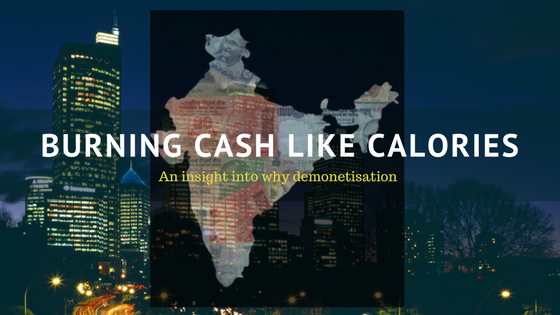
2016 proved to be a phenomenal year for India due to the ground breaking impact demonetisation made. Most of the hard cash was deposited in banks within deadline, while 16000 crore still out of the system and half that amount used for minting new notes, the situation looked bleak for Indian economy at the time. However, like all thoughtful endeavours, demonetisation too was implemented with a lot of pre-planning and a good amount of foresight.
Squeezing the cash meant long queues, temporary fall in the trade market and inability to maintain demand supply ratio for quite some period of time. It was after the hardships that the positive effects were considered by the common man. The immediate response to this sudden change was rejection…hard revolt by blaming the government for a decision poorly executed while even speculations as to why it was as necessary. Black money inflow had been converted to plastic money, perhaps, but there was uncertainty about the guarantee with which this strategy which was put forth. There are still many long term effects which proved to be a lot beneficial for us. To understand the essence of this change which still impacts us daily, we would have to look at certain points:
- Tracking money down- Banks contain all the accountable wealth of the country, which helped tracking the deposits made during that time. The daily money flow throughout an economy indicates the financial power of that country. India, due to its exorbitantly large numbers deserved a much better financial position than what it was portraying.
- Digital transaction- exchange of money became easier, registered and easily accessible to keep in government records.
- Foreign investment- India suddenly became the booming market for foreign investors as the financial value of rupee had increased exponentially
- Cash lost due to tight deadline- Some people, to avoid taxes and a spoil on their reputation, got rid of their hard cash holdings by destroying them by either burning or throwing away. While this money could have been used to aid some problems faced by India as people revolted, however burning hard cash is not as bad as you might think
The principal for value of money is simple: The value of rupee is inversely proportional to the number of rupees printed. More money minted, less is the value of the currency and vice-versa
Hence, due to various incidents like not depositing the money in the bank, burning cash and elimination of counterfeit notes, the total number of circulating rupees decreased. Simple math will be enough to deduce that the value of rupee increased in front of other currencies.
All in all, the 15.28 trillion notes received by the RBI on June 30th 2017 have amounted to worth twice the income tax of black money holders in terms of financial and economic benefit. According to me, all these long term gains definitely overpowered the short term gain of penalising the holders of black money. While it is easy to blame the government for the daily mishaps and accidents that occurred during that time, it is all the more important to see the facts and to understand the purpose behind exercising this action. There can be many factors which might have been overlooked by one before blaming someone for a decision made.